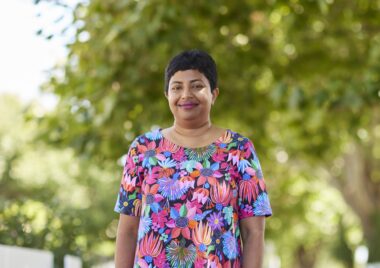An international research team led by Queen Mary University of London has developed a new method for predicting dementia with over 80 per cent accuracy and up to nine years before diagnosis. The new method provides a more accurate way to predict dementia than memory tests or measurements of brain shrinkage, two commonly used methods for diagnosing dementia
Published in Nature Mental Health, the researchers developed the predictive test by analysing functional MRI (fMRI) scans to detect changes in the brain’s ‘default mode network’ (DMN). The DMN connects regions of the brain to perform specific cognitive functions and is the first neural network to be affected by Alzheimer’s disease.
Study co-author, Associate Professor Adeel Razi from Monash University’s School of Psychological Sciences and the Turner Institute for Brain and Mental Health, said previous attempts at curing Alzheimer's disease have failed because clinical trials often focus on advanced stages of the disease, where the damage to brain cells is irreversible.
“Our new method for predicting who will develop dementia well in advance will be a game changer, enabling the development of therapies earlier in the disease process,” Associate Professor Razi said.
"By leveraging large datasets and advanced fMRI techniques, we can now identify individuals at high risk for dementia years before symptoms appear, paving the way for proactive and personalised healthcare strategies.
"This innovative approach bridges a critical gap in dementia diagnosis, offering a non-invasive biomarker that could transform early detection and treatment, ultimately improving patient outcomes.”
The study, led by Professor Charles Marshall from Queen Mary University of London, used fMRI scans from over 1,100 volunteers from UK Biobank, a large-scale biomedical database and research resource containing genetic and health information from half a million UK participants, to estimate the effective connectivity between ten regions of the brain that constitute the default mode network.
The researchers assigned each patient with a probability of dementia value based on the extent to which their effective connectivity pattern conforms to a pattern that indicates dementia or a healthy control-like pattern.
They compared these predictions to the medical data of each patient, on record with the UK Biobank. The findings showed that the model had accurately predicted onset of dementia up to nine years before an official diagnosis was made, and with greater than 80 per cent accuracy. In the cases where the volunteers had gone on to develop dementia, it was also found that the model could predict within a two-year margin of error exactly how long it would take that diagnosis to be made.
The researchers also examined whether changes to the DMN might be caused by known risk factors for dementia. Their analysis showed that genetic risk for Alzheimer's disease was strongly associated with connectivity changes in the DMN, supporting the idea that these changes are specific to Alzheimer's disease. They also found that social isolation was likely to increase risk of dementia through its effect on connectivity in the DMN.
Professor Marshall said: “We hope that the measure of brain function that we have developed will allow us to be much more precise about whether someone is actually going to develop dementia, and how soon, so that we can identify whether they might benefit from future treatments."
Lead author, Dr Samuel Ereira - also from the Queen Mary University of London, said that using these analysis techniques with large datasets could also help researchers learn which environmental risk factors pushed these people into a high-risk zone.
“Enormous potential exists to apply these methods to different brain networks and populations, to help us better understand the interplays between environment, neurobiology,” Dr Ereira said.
"This innovative approach bridges a critical gap in dementia diagnosis, offering a non-invasive biomarker that could transform early detection and treatment, ultimately improving patient outcomes,” said Associate Professor Razi.
Read the full paper in Nature Mental Health: “Early detection of dementia with default-mode network effective connectivity.”
For media enquiries please contact: Monash University
Julie-Anne Davies - Media and Communications Manager
T: +61 (0) 413 583 919
For more Monash media stories, visit our news and events site
Cheryl Critchley – Media and Communications Manager (medical)
E: [email protected]
T: +61 (0) 477 571 442
For general media enquiries please contact:
Monash Media
E: [email protected]
T: +61 (0) 3 9903 4840
***ENDS***


